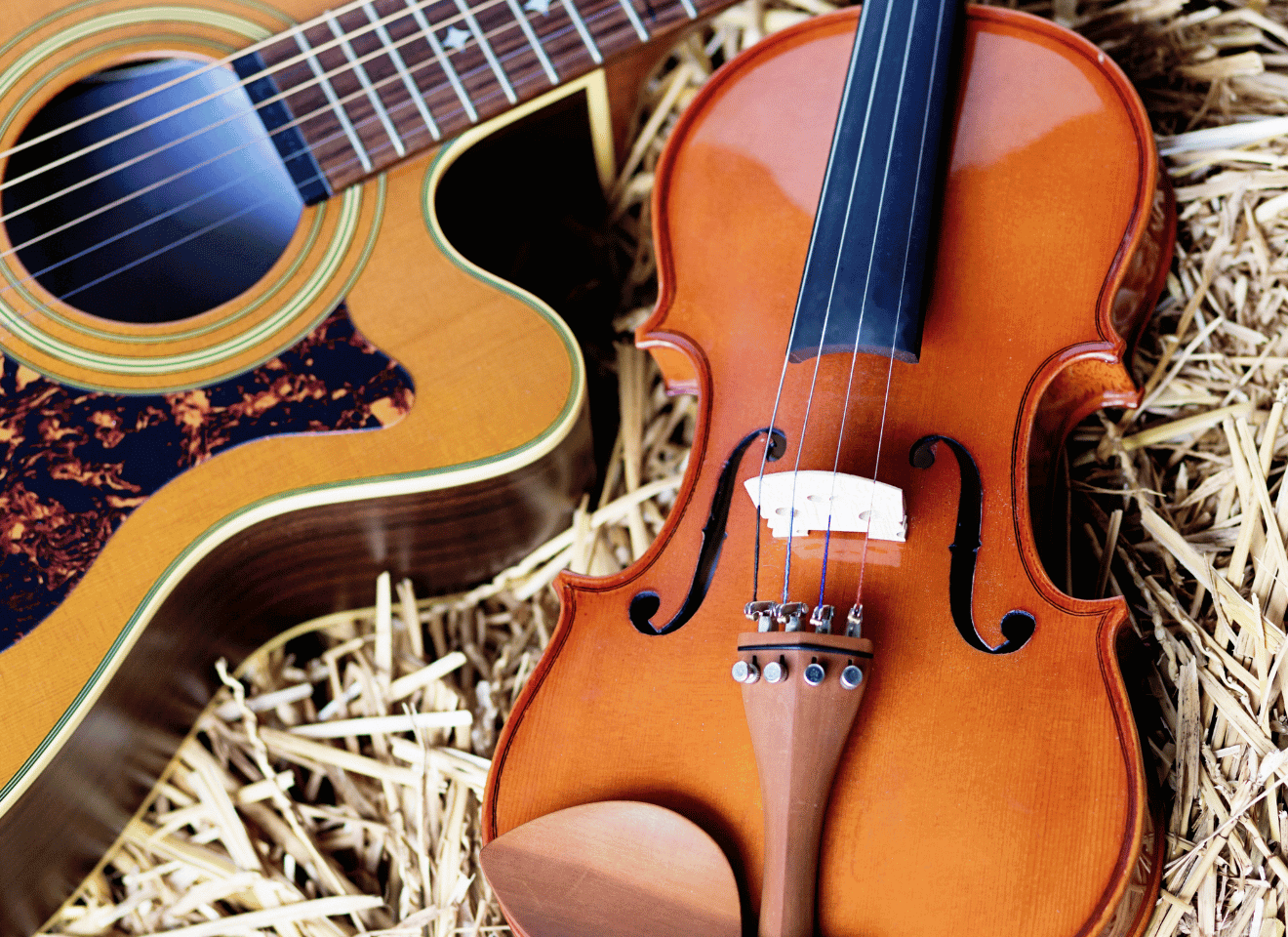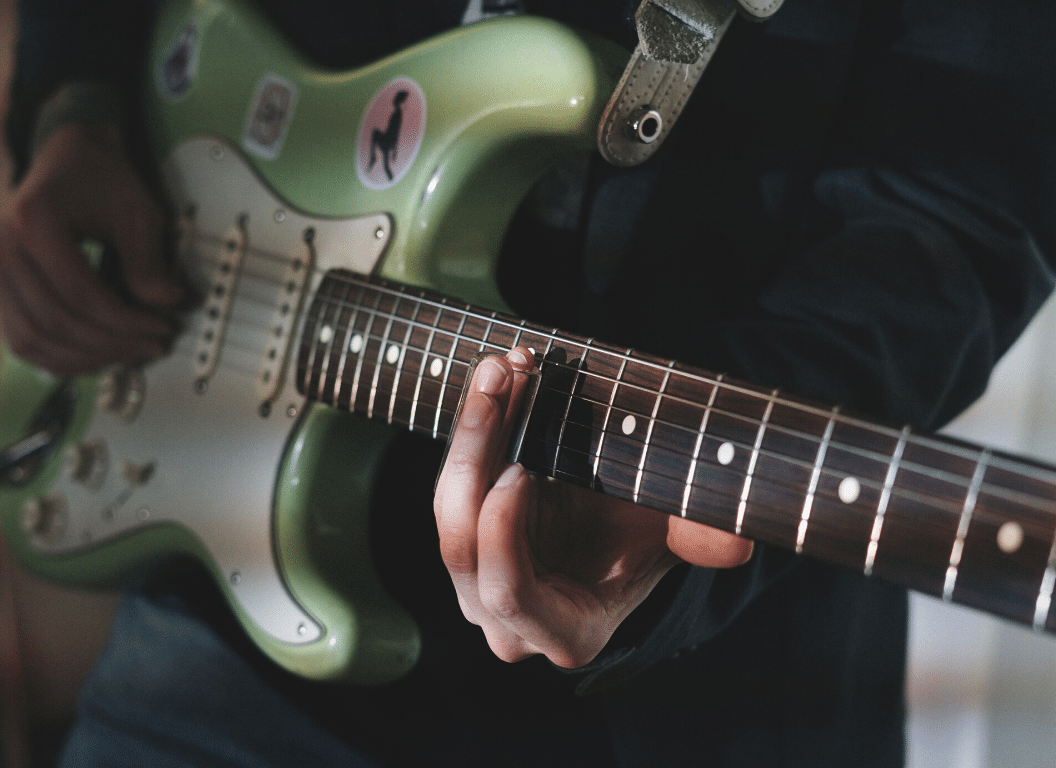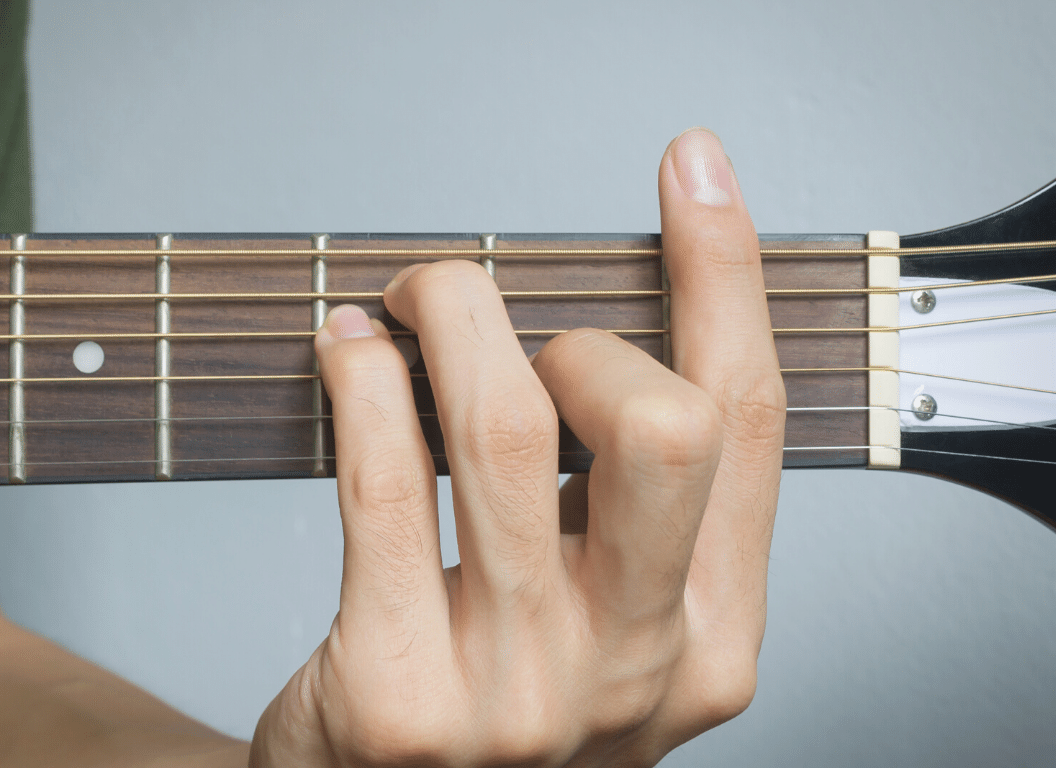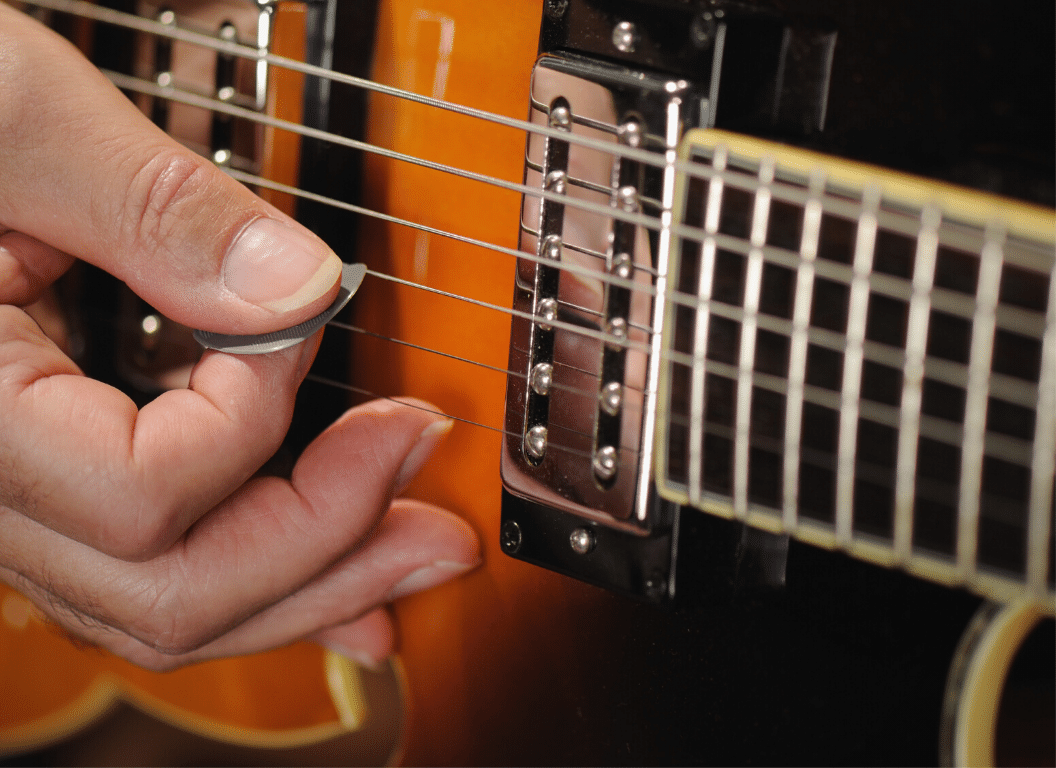In the world of music, an intriguing question often arises concerning the transference of skills between different instruments.
Particularly in the field of stringed instruments, the issue of cross-applicability of specific techniques is of significant interest to many musicians.
The knowledge gained from one instrument can indeed enhance the understanding and ability to play others.
Taking the guitar as an initial reference point, it is worth exploring the level of correlation that exists with respect to techniques and their potential deployment on other stringed instruments.
This exploration engages with both theoretical perspectives and practical experiences.
Let us venture into an inquiry surrounding the possibilities and limitations of such cross-instrument technique applications.
Table of Contents
- Can You Use Guitar Techniques On Other Stringed Instruments?
- What Are Basic Guitar Techniques To Start With?
- Transferring Guitar Techniques to Banjo
- Applying Guitar Techniques To The Violin
- Guitar Techniques vs. Ukulele Techniques
- Can You Use Strumming Techniques On A Mandolin?
- Key Differences Between Guitar Techniques and Cellos’
- What To Expect When Using Guitar Techniques On Harp?
- The Role of Finger Position in String Instruments
- Applying Picking Techniques To Other String Instruments
- The Bottom Line
Can You Use Guitar Techniques On Other Stringed Instruments?
Yes, many guitar techniques can be employed on other stringed instruments such as the ukulele, banjo, mandolin, and bass. Techniques such as finger picking, strumming, and the use of a plectrum are common across these instruments. However, the application might vary due to differences in string arrangement, tuning, and the physical layout of the instrument.
Expanding upon this, it’s important to note that mastery of these techniques can also involve understanding the unique characteristics and cultural contexts of each instrument.
From the traditional flamenco methods of the Spanish guitar to the high-spirited plucking of a bluegrass banjo, there exists a remarkable variety in the sounds they produce and the styles associated with them.
The physical requirements of playing also differ significantly, with some instruments demanding greater finger strength or flexibility.
As we delve deeper, we’ll discuss these subtleties and limitations, as well as provide insights into how musical concepts translate across different stringed instruments.
We will be exploring the styles, history, and unique techniques associated with different stringed instruments, marking an engaging continuation of this subject matter.
It’s all about broadening your musical horizons and skills.
So, read on to improve your playing and gain a deeper appreciation for the fascinating world of stringed instruments.
What Are Basic Guitar Techniques To Start With?
In the process of learning to play the guitar, the first step always involves understanding and mastering a few essential techniques.
These foundational techniques play a significant role in enhancing your playing skills and form the base for more advanced abilities.
The first basic aspect of playing guitar is getting familiar with the instrument’s anatomy.
This includes understanding the functions of different parts like the strings, frets, headstock, etc.
Equally, how you hold your guitar significantly impacts your playing technique.
Traditionally, the guitar’s body rests on the right leg for right-handed players and vice versa.
The neck should be parallel to the ground or slightly inclined.
To get further insight into the ideal posture while playing guitar, take some time to watch the following video:
From this video, you’ll learn proper finger placement and the importance of sitting and standing postures.
Finger placement and fretting
Next is finger placement and fretting.
As a general rule: the index finger is on the first fret, the middle finger on the second fret, the ring finger on the third fret, and the pinky takes the fourth.
Applying the fingers perpendicular to the fretboard while maintaining minimal pressure ensures clear sound without buzzing.
Applying the fingers perpendicular to the fretboard while maintaining minimal pressure ensures clear sound without buzzing.
This technique is vital in improving the clarity of the notes you play.
Moreover, using the fingers’ tips helps to avoid muting other strings accidentally, enabling individual notes and chords to sound explicit and clear.
Strumming
Strumming is another crucial guitar technique all beginners need to master.
Essentially, it involves hitting the guitar strings in a downward or upward motion to produce a sound.
The beat can be slow, fast, or alternated depending on the song.
The wrist should be relaxed and flexible allowing for smooth movements.
When starting, a downstroke strum, where you move your pick or finger from the sixth string towards the first, might be easier.
Once you are comfortable with this, you can try the upstroke strum, moving from the first string towards the sixth.
Picking
Another guitar technique beginners should be familiar with is picking, which is playing one string at a time.
This technique aids in playing guitar melodies, solos, and some types of riffs.
Good picking skills involve alternate picking, where you repeatedly alternate downstrokes and upstrokes.
As a starting point, beginners might find it easier to practice this on a single string before moving to more strings.
These methods represent the basics, but playing guitar involves continuous learning and practice.
As such, give these techniques time to settle and gradually advance to others.
You will soon realize that the joy of playing the guitar is in the journey of learning.
Transferring Guitar Techniques to Banjo
The guitar and banjo are both great instruments that have similar structures and thus, a couple of techniques can be transferred from one to the other.
You can transition smoothly from guitar-playing to banjo-playing thanks to the notably similar fundamental abilities required for both, like holding, strumming or finger placement.
One thing to note is the difference in the number of strings: a common acoustic guitar typically has six strings, whilst banjos generally have four or five.
This difference requires an adjustment on how you apply certain guitar techniques to a banjo.
The Role of Left Hand in Both Instruments
When taking your guitar practices to a banjo, you will find out that the left-hand techniques can stay substantially similar.
Both instruments demand an efficient use of your left-hand fingers to fret the strings properly so, it’s essentially a matter of would be reconditioning the finger placement due to the lessened quantity of strings on the banjo.
The chords can also be quite similar, although banjo chords are indeed different, but once the muscle memory sets in, you’ll find the transition smoother.
The chords can also be quite similar, although banjo chords are indeed different, but once the muscle memory sets in, you’ll find the transition smoother.
This statement means that on transitioning from guitar to banjo, you may initially find it complex to integrate your left-hand movements because the chord structures may vary on the banjo.
Nevertheless, once you develop a good muscle memory and work on your finger agility, the maneuvering will become more effortless.
Remember that practice is the key to improving your left-hand techniques, and this applies to both guitar and banjo.
Strumming and Picking Techniques
Apart from the left hand play, the strumming and picking are crucial too.
Your right-hand strategies on an acoustic guitar are rather transferable to the banjo.
There’s a lot of overlap in picking styles and strumming patterns.
Arguably, the banjo leans more towards fingerpicking.
You’ll recognize yourself doing more individual picking on the banjo than aggressive strumming you may do on a guitar.
This bending of styles could be like an entertaining challenge for guitar players transitioning to a banjo.
Arguably, the banjo leans more towards fingerpicking.
Just like guitar, banjo playing also requires the correct execution of strumming and picking.
There is, however, more emphasis on fingerpicking so you may need to refine your fingerpick abilities further.
In conclusion, while transmission of guitar techniques to banjo may be met with some challenges, the similarities between the two far outnumber the differences.
The same fundamental dexterities are needed for both.
Guitar players may indeed need to readjust their techniques, but this can be seen as an exciting new learning curve.
Applying Guitar Techniques To The Violin
Transitioning from playing guitar to playing violin can feel like a leap into the unknown, but there are many guitar techniques that can be applied to the violin.
At first glance, guitar and violin may seem like two completely different instruments, but both are stringed instruments, and share some similarities.
In simplest terms, both instruments involve pressing down strings to change the pitch, and both use a variety of right-hand techniques to create sound.
However, where a guitarist uses a pick or their fingers to pluck or strum the strings, a violinist uses a bow to draw out the notes.
Nevertheless, the core techniques of tone production, rhythm and pitch accuracy, still apply on both.
Let’s delve deeper into this parallels by dissecting some specific guitar techniques and how they can apply to the violin.
Applying guitar techniques to the violin enhances tone production, rhythm, and pitch accuracy.
The two most basic techniques of a guitarist – fretting and picking – correspond to the violin’s finger placement on the fingerboard and bowing respectively.
While the method of sound production differs, the basic concept remains the same – you have to change the length of the string to alter the pitch and use your right hand to create sound.
Fretting vs. Finger Placement
Guitarists use frets as a guide to finger placement, which limits the variance in pitch and makes playing in-tune simpler.
However, the violin has no such luxury.
Violinists have to rely on muscle memory and their ear to ensure correct pitch.
Despite this, the concept of changing pitch by stopping the string with your finger is the same.
Thus, the guitar technique of fretting can be utilized by violinists in the form of finger placement on the fingerboard, thereby determining the string’s length and therefore, its pitch.
Guitar technique of fretting can be utilized by violinists in the form of finger placement.
Understanding where to place your fingers on the violin can seem daunting initially, but with regular practice, it can be mastered just like fretting on a guitar.
Picking Vs Bowing
The right-hand technique for both instruments is where things start to diversify significantly.
While picking is quite different from bowing, the underlying principle of right-hand coordination to produce sound remains the same.
Watching this video can give you insight into how to manipulate your bow to produce various tones much like a guitarist would with a pick.
Moreover, it offers practical ways of introducing guitar techniques to your violin playing.
Bowing on the violin can be equated to picking on a guitar in terms of timing and rhythm, albeit with a dramatically different physical technique.
Bowing on the violin can be equated to picking on a guitar in terms of timing and rhythm.
With the right mindset and the right practice, a guitarist can translate their picking skills to bowing on a violin.
Taking the Leap
Switching from guitar to violin isn’t an overnight process.
It will take time, patience, and a lot of practice.
However, the foundational skills and understanding of musical theory that come from playing guitar can help ease the transition.
Most importantly, remember to enjoy the process of learning a new instrument and create beautiful music along the way.
Guitar Techniques vs. Ukulele Techniques
Delving deep into the realm of stringed instruments, one is to encounter a vibrant variety of sounds, techniques, and stylistic expressions.
The guitar and the ukulele represent two such instruments, both of which are loved and played globally.
However, as similar as they might appear, these two instruments have their unique elements contrasted by shared characteristics.
Common Techniques Between The Two
Starting with the commonalities, both guitars and ukuleles make use of similar techniques to produce sound.
This involves plucking the strings, whether with your fingers or a plectrum (also known as a pick), and pressing down on different frets to change the pitch of the notes.
As a guitar player, these techniques will be familiar, and transitioning to a ukulele should feel relatively natural.
The ability to pluck strings and press down on different frets, which are fundamental to playing the guitar, are just as important when playing the ukulele.
This quote emphasizes the foundational role that plucking and fretting play in both these instruments.
It suggests that a guitar player transitioning to the ukulele can expect to apply many of their existing skills.
However, the degree of transferability might depend on other technical and physical differences between these two instruments.
Unique Elements to Each Instrument
Despite the similarities, there are marked dissimilarities in the techniques employed while playing the guitar and ukulele.
For instance, standard guitars usually consist of six strings, whereas most ukuleles have only four.
This difference in the number of strings influences the types of chords and melodies that can be played.
Another notable distinction lies in the tuning of these instruments.
While guitars follow the standard tuning of E-A-D-G-B-E, ukuleles are usually tuned to G-C-E-A.
This diverse tuning can be a challenge at first, but it also provides an opportunity for guitarists to expand their technical repertoire and musical versatility.
Playing the ukulele demands an understanding of its unique tuning, which differs significantly from that of a guitar.
This distinction in tuning reinforces the importance of acknowledging the unique aspects and technicalities of each instrument.
It is important to approach the ukulele as an instrument in its own right, with its distinct tuning, as opposed to simply treating it as a smaller guitar.
By watching this video, players can observe and compare the techniques and styles applied to the guitar and ukulele.
It provides a useful visual demonstration of the skills discussed above and shows how they are applied in practice.
It also offers practical tips for guitarists interested in transferring their skills to the ukulele.
The Impact of Size
While the ukulele’s smaller size compared to the guitar may seem inconsequential, it significantly influences the techniques used.
Smaller and fewer strings mean that the ukulele requires less hand strength to play and can have a faster chord change rate.
These characteristics might be attractive to beginners or those with smaller hands, but they also require guitarists to adapt their technique when transitioning to a ukulele.
In conclusion, whether you are a guitarist eager to dabble in playing the ukulele or a ukulele player keen to try your hand at the guitar, understanding the similarities and differences between these two instruments is crucial.
The transition may challenge and expand your musical abilities, but with practice and patience, it can be an immensely rewarding journey.
Can You Use Strumming Techniques On A Mandolin?
As one of many stringed instruments, the mandolin bears certain similarities to the guitar that makes it possible to apply guitar strumming techniques when playing it.
This ability enhances the versatility and expressive potential of this delightful instrument.
Unlike the guitar, the mandolin has eight strings arranged in courses, or pairs, with each pair tuned to the same note.
This unique arrangement may at first present a challenge to the guitar player transitioning to a mandolin, but it also opens up new combining possibilities that are non-existent in a guitar.
When applying strumming techniques to the mandolin, it is important to learn how to hold the pick correctly and to develop a smooth, even and rhythmic strumming pattern.
These skills can easily be transferred from the guitar to the mandolin.
A notable aspect of strumming on a mandolin is the impact of the double string courses.
They add a thickness to the sound that can’t be achieved on a guitar, thereby enriching the texture of the strummed chords.
This unique string arrangement is what gives the mandolin its distinctive, full sound, making it a rich, resonant instrument that is ideal for strumming.
A good understanding of the string courses and how they interact when strummed will go a long way in applying guitar strumming techniques to the mandolin.
As much as the basic guitar strumming techniques may apply, it’s important to note that the mandolin has a shorter neck and a tighter string tension than a guitar.
This means that overly aggressive guitar strumming techniques may not be as effective on a mandolin and could even lead to breaking strings if not adapted appropriately.
However, guitar players can take advantage of their knowledge of chord structures and progressions when playing the mandolin.
By transposing these structures, a guitar player can quickly become accustomed to playing the mandolin and strumming chords with ease.
This integration of guitar knowledge into the mandolin allows guitar players to easily adapt their strumming techniques to this unique stringed instrument, resulting in a seamless transition and a richer musical experience.
While moving from guitar strumming to mandolin strumming offers various opportunities, there are also some more advanced techniques that might present a challenge.
Quick alternating picking patterns, known as “tremolo” in mandolin terminology, can be difficult to achieve using traditional guitar strumming approaches.
Despite these challenges, learning to strum a mandolin opens up all kinds of new creative opportunities.
The distinctive tone, harmonic possibilities, and rhythm capabilities of the mandolin can give guitar players a newfound appreciation for multi-string instrument strumming techniques.
Once the key distinctions and similarities between guitar and mandolin strumming have been recognized, guitarists can quickly start applying their strumming techniques and create unique, beautiful music.
Key Differences Between Guitar Techniques and Cellos’
When examining the fundamental techniques of playing the guitar and the cello, it quickly becomes apparent that these are two distinct instruments.
The differences range from their physical structure to the methods of making sound and the way they are played.
Fundamental Technique Differences
One of the first differences that a new player might notice is the physical orientation of the instruments.
The guitar is mostly horizontal and is usually played while seated or standing, with the instrument supported by a strap.
On the other hand, the cello is primarily vertical, resting on the floor on a peg and played while the musician is seated.
One of the first differences that a new player might notice is the physical orientation of the instruments.
These differences in orientation affect the playing position, which can ultimately influence the techniques utilized.
The cello involves the constant use of both arms and hands, while the guitar allows for hands to alternate between strumming and fretting.
Differences in Sound Creation
Another key difference lies in the method of sound creation.
Guitars make sound typically through the plucking or strumming of the strings with a pick or fingers, whereas, the cello uses a bow to vibrate the strings, creating a completely distinct sound and technique.
Occasionally, cello players may pluck the strings in a technique known as pizzicato.
Guitars make sound typically through the plucking or strumming of the strings with a pick or fingers, whereas, the cello uses a bow to vibrate the strings, creating a completely distinct sound and technique.
Despite using different techniques, the connection between the musician and the instrument in creating sound is a fundamental aspect of both the guitar and the cello.
To understand and observe these differences more clearly, you might want to watch a detailed comparison video.
Differences in Playing Techniques
Playing techniques also vary between the guitar and the cello.
The guitar has a wide range of chords, enabling the guitarist to play multiple notes at once.
On the contrary, the cello primarily focuses on one note at a time, emphasizing the melodic line.
It’s worth noticing that while both instruments use frets and strings, the cello, like other members of the violin family, does not have frets on its fingerboard.
The guitar has a wide range of chords, enabling the guitarist to play multiple notes at once.
This fact enhances the flexibility and expressiveness, but it also increases the difficulty in mastering the cello, as it requires precise intonation and finger positioning.
Understanding these core differences between the techniques used on a guitar and a cello can provide an interesting insight into the world of string instruments and their unique characteristics.
What To Expect When Using Guitar Techniques On Harp?
Transferring guitar techniques to a completely different instrument like a harp can create a unique musical synergy.
It’s important to remember that, while these instruments both involve plucking strings, there’s a vastly different range, tuning, and layout involved when transitioning from guitar to harp.
The guitar’s fret-based structure allows for seamless transitions between keys and notes, while the harp’s open-note layout presents a new challenge.
The process of picking and fingerstyle techniques from guitar to harp can be relatively seamless, as both involve plucking strings.
These techniques should be adapted to the harp’s character, built on utilizing the correct order and position of fingers to achieve the highest possible sound quality.
With time, the process becomes more intuitive and gives way to more complex performances.
This emphasizes that the transfer from guitar picking to harp plucking is among the smoother techniques to adopt, due to the inherent similarities between the instruments.
Strumming Techniques
Strumming, a fundamental technique in guitar playing, can be transferred to harp for amazing effect.
Although it requires substantial arm movement and a less established position than guitar playing demands.
On guitar, the guitarist will strum all six strings whereas on harp, the musician may have to deal with up to 47 strings, effectively requiring a new approach for achieving a balanced sonorous output.
It is indeed possible to achieve a beautiful outcome in harp by employing guitar strumming techniques.
However, it requires practice and a sensitive touch.
The Challenges
Coming from guitar, the agility of left hand may prove to be a challenge on a harp.
Not having a fretboard to guide hand placements may feel odd and can potentially affect the fluidity of playing.
It may take some time to get comfortable, but with practice, former guitarists can achieve a high degree of precision and speed on a harp.
Furthermore, reading music for a harp may also pose a challenge, particularly if the guitarist is used to tablature rather than traditional musical notation.
Getting accustomed to the harp’s layout and making the mental adjustment for finger placements may prove challenging at first.
However, practicing regularly will gradually mitigate these barriers.
The Role of Finger Position in String Instruments
Finger position is a crucial aspect of playing any string instrument, whether it is a guitar, violin, banjo, or cello.
Mastering the proper finger technique not only enhances the sound quality but also prevents strain and injuries.
Understanding the role of finger positioning helps pupils to play comfortably and for extended periods.
When you place your fingers correctly, you can make the most out of your instrument.
Finger Position in String Instruments
The positioning of fingers on the fretboard has a significant impact on the sound produced by string instruments.
This position determines whether the note will be sharp, flat, or accurate.
A slight change in finger position might cause a significant change in tone.
Proper finger positioning also contributes to a player’s speed and flexibility when transitioning between notes and chords.
The positioning of fingers on the fretboard significantly impacts the sound produced by the string instrument.
Proper finger placement helps musicians play more smoothly and fluidly.
It increases the command over the instrument and enables the player to produce a wider range of sounds.
Finger Position Techniques
It’s crucial to maintain a curved hand position with your fingers close to the frets while playing string instruments.
Each finger should be responsible for a specific fret — this method is common across different string instruments.
Keeping your fingers close to the strings without pressing them is another general principle that improves speed and reduces unnecessary movements.
Watching this video can provide a practical understanding of finger positioning.
It will provide you a comprehensive understanding of violin finger patterns, which can be applied to other string instruments as well.
Finger Position and Playing Comfort
Proper finger placement can significantly increase your comfort while playing.
By reducing unnecessary strain on your fingers and hand, you can play for extended periods without discomfort.
Importantly, good finger placement also reduces the risk of repetitive strain injuries, which are common among musicians.
Proper finger placement can significantly increase the comfort of playing, reducing the risk of repetitive strain injuries.
Therefore, dedicating time and effort to master proper finger placement is not only beneficial for sound quality but also for the player’s comfort and health in the long term.
To sum up, the role of finger positions in string instruments is multifaceted.
It affects sound quality, player comfort, and the risk of injury.
Just like learning chords or scales, it’s crucial to dedicate time and effort to practice and master proper finger placement.
Applying Picking Techniques To Other String Instruments
Picking a string instrument isn’t just about hitting the strings, but it’s about understanding how the movement and pressure of your fingers affect the sound produced.
The primary technique used in picking for guitar, the pizzicato technique, involves plucking the strings with your fingertips.
It’s also very common in playing other string instruments.
In order to successfully transfer this technique to other instruments, you must first understand the intricacies of the pizzicato technique.
It’s all about the hand placement, finger strength, and rhythm.
Once these elements have been mastered on one instrument, they can be applied to others.
Picking a string instrument isn’t just about hitting the strings, but it’s about understanding how the movement and pressure of your fingers affect the sound produced.
This is particularly essential for understanding how to handle strings of different thicknesses and tensions on various instruments, and how the sound and response will differ accordingly.
The knowledge of the pizzicato technique makes it easier to adapt to different string instruments such as the violin or the cello.
For example, the pizzicato technique can be applied to the violin by plucking the strings with the finger of the right hand while the left hand controls the pitches.
This is a little different from the guitar where the left hand usually forms the chords while the right hand does the picking.
For example, the pizzicato technique can be applied to the violin by plucking the strings with the finger of the right hand while the left hand controls the pitches.
The movement, rhythm and tone in violin pizzicato picking is quite similar to that of guitar picking, only that it involves different hand usage.
While transferring guitar picking techniques to other instruments, it’s important to consider the inherent characteristics of the instrument.
Each instrument has unique characteristics that will affect the application of the technique.
The material of the string, the design of the instrument, and even the posture used while playing can affect the sound and comfort of playing.
Each instrument has unique characteristics that will affect the application of the technique.
The more you’re involved in playing a variety of string instruments, the more you’ll understand these nuances and be able to adjust accordingly.
Therefore, the key to effectively apply guitar picking techniques to other strings instruments is practice, patience, and understanding of the technique and the instrument.
The Bottom Line
String instruments, though different in their own unique ways, share similarities in technique that make it possible for skills to be transferable from one to the other.
Basic guitar techniques offer a solid foundation but should be adjusted and refined when applied to instruments such as the banjo, violin, berimbau, ukulele, mandolin, cello, and harp.
Differences certainly exist in the approach towards strumming and picking techniques, and finger positioning plays a crucial role in mastering these instruments.
Nevertheless, exploring these differences and similarities offers a holistic understanding of string instruments and opens up avenues for better, more flexible musicianship.

Born and raised in Florida! I’ve been playing guitars for the past 5 years. Love to learn, and I’m always striving to achieve greater heights in music. Currently have a Fender Stratocaster as my main guitar.




